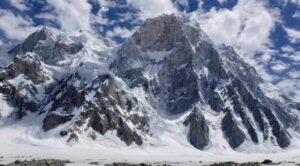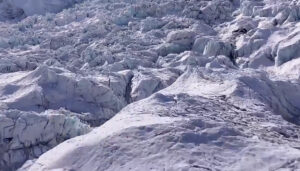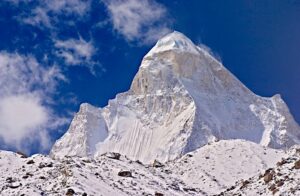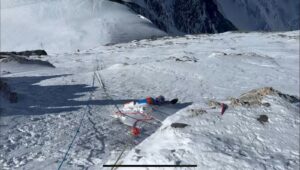Nearly 400 clients, porters, and guides have started up Everest on a last-minute summit push before the season shuts down. Long lines crossed the Khumbu Icefall toward Camps 1 and 2 today, ready to wait out days of bad weather before heading further up.
After over 170 summits yesterday and 100 more today, you might think that Base Camp is almost empty. In fact, a number of large expeditions, including several teams outfitted by the big Nepali outfitters, are taking positions for next week.
In the last few days, two major obstacles have suggested that this final push might not happen at all. First, the Ice Doctors planned to close the route up the Khumbu Icefall on May 28, which meant that climbers had to be down by Friday. Second, Cyclone Yaas — the second in two weeks — has formed in the Bay of Bengal and will hit the Indian subcontinent on Wednesday. While it is yet unclear how much this will affect the Himalaya, conditions on Everest will surely worsen.
But teams have come up with a strategy to sort both problems out.
Somehow, the Ice Doctors have agreed to keep the route to Camp 1 open until May 31, according to Alan Arnette. To get around the cyclone, expedition leaders have planned a week-long, two-stage summit push.
Virtually everyone in Base Camp has jumped up at the green-light signal. “This is the moment we have all been waiting for,” the Climbalaya team posted today.

Clouds show wind and unstable weather ahead on Everest. Photo: Alex Abramov
A risky strategy
Teams crossed the Khumbu Icefall today in good weather, en route to Camp 2. Here, in this relatively comfortable and sheltered spot, safe from avalanches, they can ride out the cyclone. Forecasts suggest that conditions will improve by May 27-28. If the cyclone does not deposit too much snow and the wind drops acceptably, the remaining climbers can then summit on May 29 and 30.
If so, the final summit score on Everest could increase by hundreds. However, the strategy requires good luck and involves significant risks.
Even in the best-case scenario, conditions will be not ideal. The cyclone will bring snow. Wind speed on the planned summit days is unpredictable. Tired climbers wait at altitude amid uncertainty, then will have to rush to get their cherished summit.
Furthermore, as the monsoon approaches, temperatures typically rise, making the Khumbu Icefall more unstable. A few might inelegantly call for an airlift from Camp 2, although that wouldn’t be an option in bad weather.
Finally, COVID continues to present a threat, no matter how desperately everyone tries to pretend that it doesn’t exist. A second outfitter, Mountain Trip, had to cancel their summit push when six Nepali staff fell sick only three days ago. Lukas Furtenbach, who also aborted his company’s expedition because of the coronavirus, told ExplorersWeb that the members of his team who fell sick probably caught it at the Khumbu Icefall. This was the only time Furtenbach’s careful group was close to other teams, everyone breathing heavily as they waited.
Furtenbach’s clients developed their symptoms back in Base Camp, an easy location from which to evacuate. It won’t be straightforward for any climbers in Camp 2 or higher, especially given the unstable weather.






